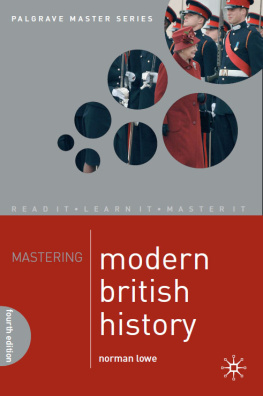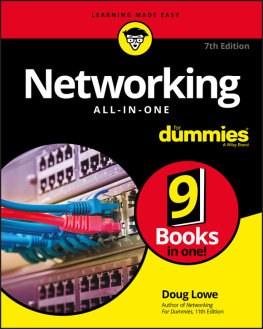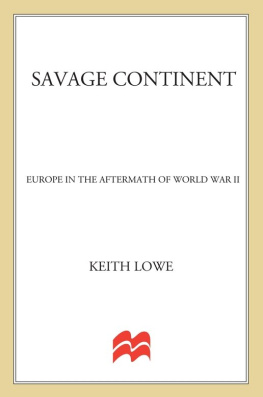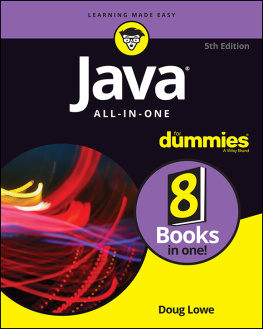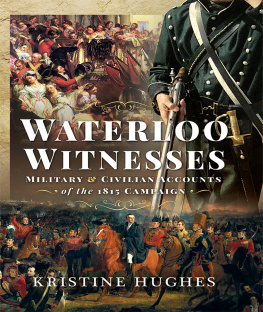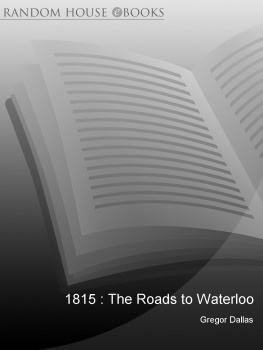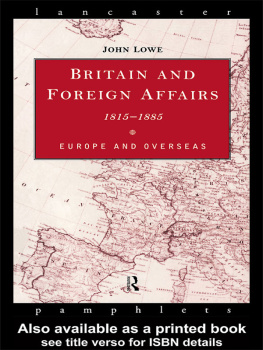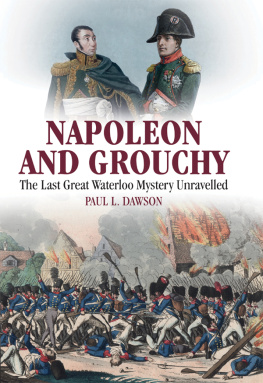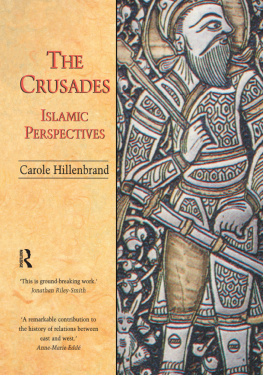Acknowledgements
The author and publishers wish to thank the following for permission to reproduce copyright material:
Guardian News & Media Ltd. for Figure 33.1, from The Guardian, 17 July 1997, Copyright Guardian News & Media Ltd. 1997; Eurostat data is reprinted by permission of the European Communities; Hodder Education for Tables 21.1 and 21.2, from R. W. Wolfson, Years of Change: European History, 18901945 (1979), reproduced by permission of Edward Arnold (Publishers) Ltd; Oxford University Press for Table 15.4, from A. J. P. Taylor, The Struggle for Mastery in Europe, 18481918 (Oxford History of Modern Europe) (1971); Palgrave Macmillan Ltd for Tables 33.1 and 35.1, from D. Childs, Britain Since 1939: Progress and Decline (1995); Pearson Education Ltd for Tables 15.2 and 25.1, from C. Cook and J. Stevenson, Handbook of Modern British History, 17141987, published by Longman (1988); Penguin Books Ltd for Tables 25.2 and 25.3, from J. Stevenson, British Society, 19141945 (1984), pp. 270, 271, Copyright John Stevenson, 1984, reproduced by permission of Penguin Books Ltd; Taylor & Francis Books UK for Tables 15.1, 15.3, 15.5 and 15.6, from P. Mathias, The First Industrial Nation, published by Methuen (1969).
The following new photograph sources are acknowledged:
National Archive, 2.1 (p.20), The Peoples Charter, 6.1 (p.80), istock, 7.1 (p.87), 9.1 (p.116), 13.1 (p.221), 14.1 (p.239), Wikipedia, 10.1 (p.143), The Art Archive, 12.1 (p.168), 15.1 (p.258), Photos.com, 16.1 (p.289), Getty, 17.1 (p.314), 24.1 (p.478), 22.2 (p.438), 29.1 (p.572), Library of Congress, 22.1 (p.434), 2000 Credit:Topham/PA, 25.1 (p.503), 28.1 (p548), 35.1 (p.730) Rex Features, 27.1 (p.532), 36.1 (p.791), Alamy, 33.1 (p.676).
Every effort has been made to trace all the copyright-holders, but if any have been inadvertently overlooked the publishers will be pleased to make the necessary arrangements at the first opportunity.
chapter
introduction
1.1 prologue: Waterloo
In the late evening of Sunday, 18 June 1815, as the smoke and rain-clouds cleared to reveal the setting sun, the Battle of Waterloo drew to an end. Napoleons Imperial Guard and the whole French army were in retreat. As they streamed away from the battlefield, leaving behind a mass of artillery and baggage, they were harassed by British and Prussian cavalry. Meanwhile, the two allied generals, Wellington and Blucher, met briefly and congratulated each other on their victory. In the chaos, Napoleon himself was held up for over an hour only four miles from the battlefield, at the village of Genappe. There was utter confusion as several thousand men struggled and fought to cross the only bridge over the River Dyle. With only minutes to spare before the Prussian cavalry caught up, Napoleon at last forced a path through, and galloped away towards Charleroi and Laon.
He reached Paris on 21 June and, realizing the hopelessness of the situation, he abdicated four days later. He was exiled to the tiny island of St Helena in the South Atlantic; the long series of wars that had lasted almost continuously since 1792 (Britain became involved in 1793) was over. Wellington was horrified by the carnage at Waterloo: the British had lost a quarter of their army over 15,000 dead and wounded including nearly all Wellingtons personal staff. He shrank from ever having to use force again. Wellington was to play a prominent part in public life for over thirty years after Waterloo; and when he was Prime Minister (182830), it was this reluctance to resort to force that in 1829 was to lead him to agree to Catholic emancipation rather than risk a civil war in Ireland (see Section 2.7(b)).
1.2 themes of change after 1815
Britain in 1815 was a victorious nation, apparently at the height of its power and prestige. But there was to be no tranquillity after the turmoil of the previous twenty-two years; the period following the Battle of Waterloo turned out to be crammed with important changes and developments. Some of them, such as the Industrial and Agricultural Revolutions, were already under way before the outbreak of war with France in 1793; others, such as falling prices and industrial slumps, came in the aftermath of the wars. These changes brought with them innumerable problems poverty, discontent and violence. The ruling classes, badly shocked at the fate of the aristocracy during the French Revolution, were nervous in case a similar outbreak occurred in Britain.
(a) industrially and commercially, Britain led the world through much of the nineteenth century
In 1815 Britain was still in the throes of what is known as the Industrial Revolution, which lasted from the 1740s until the 1850s. Historians still disagree about exactly when this revolution started and finished; in fact, one can argue that it has never really come to an end and is still happening today. Some historians do not like to use the word revolution because they think it implies too sudden a change and they feel that in reality the process was too gradual to be called a revolution. Nevertheless, Industrial Revolution is still a convenient phrase to describe the introduction of the many new inventions and techniques that transformed the Midlands, the North and parts of Scotland from being mainly rural areas where the majority of people worked in agriculture, and where such industry as existed was carried on in homes or in small factories, into a mainly industrial society of large, power-driven mills and factories concentrated in sprawling industrial towns.
The cotton textile and metal industries were the centrepiece of the revolution. The main inventions included Hargreaves spinning jenny (1764), Arkwrights water frame for spinning first used in his big mill at Cromford in Derbyshire (1771), Cromptons spinning mule (1779), Watts rotary steam-engine (1781) and Cartwrights power loom (1785). In 1785, a steam-engine was used for the first time to power a cotton-spinning mill, and by 1800 at least 500 of them were in operation. The need for armaments during the wars acted as a stimulus to the metal industries and resulted in the widespread adoption of coke-fired blast furnaces for producing iron. At the same time there was an expansion in the coalmining industry.
However, the main expansion of industry took place after 1815. For example, power-loom weaving had not caught on by 1815, even though Cartwrights loom had been available for thirty years. Yet, by 1835, after it had been improved by Horrocks, there were 85,000 of them in use in England and 17,500 in Scotland; whereas imported cotton for weaving amounted to a modest 82 million pounds in weight in 1815, it had soared to 1,000 million pounds in 1860. Coal production rose sharply, from about 15 million tons in 1815 to 44 million tons in 1846. Together with the industrial expansion went a marked population increase, from about 18 million in 1811 to over 27 million in 1851. The increase was most noticeable in the industrial towns and cities, so that by 1851, about 80 per cent of the labouring population worked in some form of manufacturing industry. Another development of crucial importance was the introduction and spread of the railway; the greatest era of railway building was between 1830 and 1860.
During the last quarter of the nineteenth century, Britain began to lose its economic lead, and by the outbreak of the First World War in 1914, Germany and the USA had taken over Britains position as the worlds greatest manufacturing power.
(b) agriculture had also seen the appearance of new techniques and changes, usually referred to as the Agricultural or Agrarian Revolution
Early in the eighteenth century, new crops were introduced turnips, clover and sainfoin which provided winter fodder for cattle. Thomas Coke, of Holkham in Norfolk, demonstrated how yield could be increased greatly by using marl to enrich light soils, by using bones as fertilizer, and by improving land drainage. Robert Bakewell, of Dishley in Leicestershire, concentrated on careful and scientific breeding of animals, and showed that by allowing only the best specimens to breed, it was possible to produce far superior cattle and sheep. Another important aspect of the agricultural revolution was

